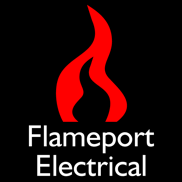Heat only and system boilers
These boilers provide heat for radiators and a hot water cylinder. Unlike combination boilers, there is no instant hot water facility - hot water is provided by heating a separate cylinder of stored water.
System boilers are also heat only boilers, but contain some of the other components such as the pump inside the boiler casing. The principles of operation are the same.
The boiler may use natural gas, LPG or oil as fuel - for the electrical controls there is no difference.
Quick links to system plans
Quick links to component information
Programmers - Room thermostats - Cylinder thermostats - Motorised Valves
Principles of operation
The boiler heats water in a sealed circuit. This heated water can be diverted to radiators, a hot water cylinder or both. Other systems such as underfloor heating pipes can also be connected.
In addition to the boiler, a programmer/timer will be required, at least one room thermostat, a hot water cylinder thermostat, one or more motorised valves to control water flow, and a circulating pump. The pump can be a separate item, or some boilers have the pump inside the boiler casing.
The electrical controls (programmer, thermostats and valves) operate together, with the end result being that one or more valves is opened to direct the water flow, and a signal is sent to the boiler so that the water is heated. The usual sequence is that both the thermostat and programmer must be ON, the valve motor moves to open the valve, and when open a switch in the valve activates the boiler and pump.
Overview Video
This video covers the main electrical components of a heating system. Further descriptions continue below. View on Youtube.
Power supply
Although there will be several components requiring mains power, the entire system must be supplied from a single source, typically a 3A fused spur. This allows easy isolation for maintenance and servicing.
For ease of wiring, a wiring centre or large junction box should be used, with the cables from each component joining at this one point.
Boiler
Virtually all modern boilers require a permanent power supply, even when the system is switched off. The boiler is controlled by an additional wiring connection, usually a second live wire. When this wire is live, the boiler operates. 4 core flex can be used for the connection (L/N/E and switched L).
Older boilers typically just had a power supply and simply operated when power was connected, and stopped when power is switched off. For these, standard 3 core flex can be used.
Pump
Where the pump is a separate item, it is normally connected directly to the boiler using 3 core flex, so that the boiler can control it to remove excess heat after the system is switched off. On some old systems, the pump may be connected directly to the programmer or other controls, so will only operate when the boiler is on.
Programmer / Timer
A programmer is required so that heating and hot water can be switched on when required.
A two channel programmer is the minimum (hot water and central heating), although models with additional channels exist so that multiple heating zones can be controlled separately.
Normally, hot water and heating can be controlled separately. On some systems, particularly old ones, the hot water is always selected, so it is not possible to have heating only.
Thermostats
A room thermostat will switch off the heating when the required air temperature is reached. A heating system would still function without a room thermostat, but this would be very inefficient, since the heating will run continuously, and the rooms will get excessively hot. Installing such a system won't comply with building regulations either.
A thermostat is also required on the hot water cylinder, so that the system is switched off once the cylinder is fully heated. Without this, the cylinder will be continously heated to temperatures which are probably too hot, and will use excessive amounts of fuel.
Motorised valves
These open and close as required to control the flow of heated water from the boiler. A 2 port valve is either open or closed, one being used for each section (usually hot water and radiators).
Three port valves have a single inlet and two outlets, so that water can be diverted to either the hot water, radiators or both.
The valve also contains one or more switches, which are generally used to switch the boiler on once the valve is open. This ensures the boiler only operates when the valve is open - otherwise, water would not circulate and the boiler would quickly overheat.
Combined thermostats and timers
Some thermostats have the capability of setting different temperatures at different times, or include timers to partially or fully replace a programmer. However the basic principles of switching on/off at certain times and in response to the room temperature are the same.


